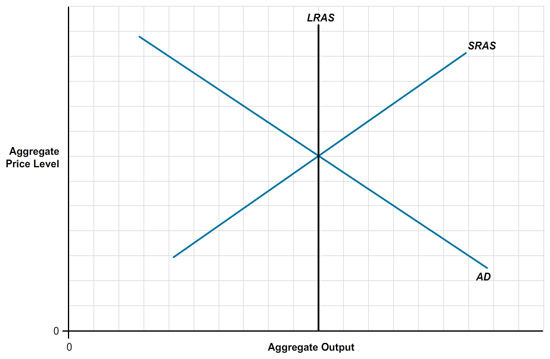Solved Problems
Chapter 13b (24b)
TABLE OF CONTENTS
Question 1 of 5
Step 1
Solved Problems
true
true
You must read each slide, and complete any questions on the slide, in sequence.
Consider the following AS-AD model. The aggregate demand (AD) curve, short-run aggregate supply (SRAS) curve, and long-run aggregate supply (LRAS) curve are given in this graph.

If the Federal Reserve increases the money supply, interest rates .
This shifts the money supply curve right, lowering the price of money (or interest rate). When money is more readily available, it costs less to borrow.
3
Step 2

As a result, is most likely to be affected, and it .
Investment is the change in the capital stock, and the interest rate is the payment to capital. Cheaper capital means more is purchased.
3
Step 3

then shifts .
Investment is part of AD, since AD = C + I + G + (X - M). Increases in investment shift the curve right.
3
Step 4

In the short run, as a result, the aggregate price level and aggregate output , but in the long run .
Rightward shifts in the AD curve raise both aggregate price level and aggregate output in the short run. In the long run, AS shifts left and the intersection of LRAS and AD is at the original aggregate output level. The aggregate price increases that are caused by the AD shift eventually cause input costs throughout the economy to rise. This in turn shifts the AS curve left.
3
Step 5
If the Federal Reserve increases the reserve ratio, interest rates , aggregate demand then shifts , and aggregate output .
A higher reserve ratio lowers the money supply, because fewer loans can be made and the money multiplier is reduced. This has an opposite effect as compared to a monetary expansion.
3